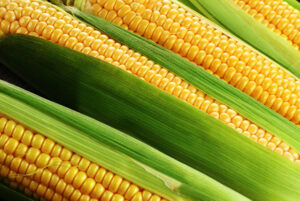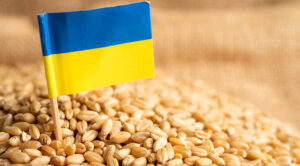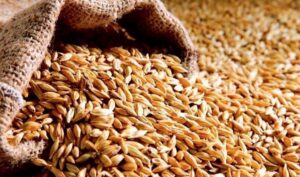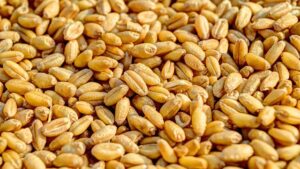
“Kernel, one of the largest Ukrainian agro-industrial groups, processed 845 thsd tonnes of oilseeds in the third quarter (January-March) of the financial year (FY) 2024/25, up 3% y-o-y, but down 9% q-o-q, according to the agroholding’s report.
According to the report, in January-March 2025, Kernel processed 694 thousand tons of sunflower seeds and, due to the lack of raw materials in the domestic market of Ukraine, also processed 151 thousand tons of soybeans at three plants. In addition, the agroholding processed 50 thou tons of sunflower seeds under tolling agreements with third parties.
As a result of processing of both sunflower seeds and soybeans in the third quarter of 2024/25, the agricultural holding’s edible oil sales fell by 9% year-on-year to 347 thsd tonnes. At the same time, sales of edible oil in the first nine months of FY2025 amounted to 1 mln tons, which is 6% less than in the same period last year.
The report also notes that grain supplies to the agricultural holding’s elevators decreased by 2% to 2.7 million tons in the first nine months of FY2025.
“In the third quarter of FY 2024/25, Kernel reduced grain exports by 15% to 1.6 mln tonnes compared to the same period last year, which it explained by the decline in the harvest in Ukraine. In total, Kernel exported 4.4 mln tons of grains and oilseeds in the first nine months of the year, accounting for 12% of the national exports.
Transshipment through the agricultural holding’s export terminals reached 2.5 million tons in the third quarter, up 2% year-on-year. This volume included 1.8 mln tons of grains, 0.3 mln tons of edible oil, and the rest was made up of oilseeds.
In total, for the first nine months, the transshipment volume amounted to 7.3 mln tons, up 65% year-on-year, due to the low comparison base in FY 2024/25 due to the closure of the Black Sea ports at the beginning of the season, the agricultural holding summarized.
Kernel is the world’s largest exporter of sunflower oil, one of the largest producers and sellers of bottled oil in Ukraine. In addition, it is engaged in the cultivation and sale of agricultural products.
In the first nine months of 2024, the agricultural holding reduced its net profit by 53% to $204 million, while its revenue decreased by 4% to $2.595 billion, and its EBITDA decreased by 36% to $384 million.

“Kernel, one of Ukraine’s largest agricultural holdings, intends to strategically adjust its crop mix for the 2025 harvest during the spring sowing campaign to align with its more sustainable practices that were maintained before the full-scale war in Ukraine.
According to the quarterly report published on the company’s website on Friday, Kernel plans to allocate about 168 thousand hectares for corn, which is twice as much as in the 2024 season and will account for 49% of its total production area.
At the same time, the agroholding plans to reduce sunflower acreage by 34%, to 44 thou hectares (or 13% of the crop structure). The agricultural holding explained this decision by further optimizing land use and restoring long-term agronomic sustainability.
“In 2025, Kernel will also reduce its soybean acreage to 27 thou hectares, while a year earlier it had 72 thou hectares under soybeans.
“As of the date of the report, winter crops – including 95 thou hectares of winter wheat and 3.45 thou hectares of rapeseed – are in generally good condition, with no significant risks beyond the usual seasonal factors at this stage,” the agricultural holding summarized.
Kernel is the world’s largest exporter of sunflower oil, one of the largest producers and sellers of bottled oil in Ukraine. In addition, it is engaged in the cultivation and sale of agricultural products.
In FY2024, Kernel’s net profit decreased by 44% compared to FY2023 to $167.95 million, while revenue increased by 4% to $3.581 billion and EBITDA decreased by 30% to $381 million.

The U.S. Department of Agriculture (USDA) has lowered its forecast for Ukraine’s grain production by 13% and exports by 26% due to the country’s depleted stocks.
According to the February forecast, the country’s ending grain stocks in the 2024-2025 marketing year (MY, July-June) are estimated at 1.8 million tons, up 19% from last year, but significantly lower than before the large-scale invasion in February 2022.
The EU will remain an important destination for Ukraine given its liberalized trade policy and geographical proximity. At the same time, Ukrainian exporters continue to regain their traditional markets, made possible by the efficient operation of the Black Sea ports, the report says.
According to the USDA, the wheat harvest in 2024/25 MY in Ukraine will amount to 22.9 mln tons, which is the same as last year, but its exports will decrease by 19% to 15 mln tons. The barley harvest will be 3% lower than in the season-2023/24, and is estimated at 5.9 million tons, while exports will amount to 2.6 million tons. The forecast for rye production was lowered by 18% to 190 thousand tons.
Rye has become a niche crop for Ukrainian farmers, so its production and exports can vary significantly from year to year, the USDA said.
The USDA forecasts the largest reduction in corn, the production of which will decrease by 24% compared to 2023/24 MY – to 24.6 mln tons, while exports will fall by 33% – to 19.6 mln tons. The ending stocks of the grain are forecasted at 722 thsd tonnes, up slightly from the previous year, but significantly lower than the 2.8 mln tonnes that were in reserve at the end of the 2022/23 season.

The agricultural production department of one of the largest grain market operators in Ukraine, Nibulon JV LLC, has fertilized winter crops on 7820 hectares, which is 48.3% of the total area planted for the 2025 harvest, the agricultural holding’s press service reports on Facebook.
“Currently, we are actively applying ammonium nitrate, one of the most effective nitrogen fertilizers that provides plants with the necessary macronutrients for healthy growth and development. Timely application of this fertilizer significantly affects the final yield of winter crops,” the agricultural holding explained.
Nibulon plans to fertilize a total area of 16.2 thou hectares with ammonium nitrate, including 8.6 thou hectares of winter wheat and 7.6 thou hectares of winter rapeseed. In addition to ammonium nitrate, ammonium sulfate will be added to improve plant nutrition efficiency.
Currently, winter crops have been fertilized on a total area of 7,820 hectares, including 5,602 hectares in Mykolaiv cluster, 1,970 hectares in Central cluster and 248 hectares in Kamianets-Podilskyi cluster.
After fertilizing winter crops, the fields will be harrowed and plant protection products will be applied.
“The implementation of these agrotechnical measures in the complex will ensure the creation of optimal conditions for the growth and development of winter crops, which, in turn, will help to increase their yield and maintain high quality products,” the agricultural holding summarized.
Nibulon JV LLC was established in 1991. Prior to the Russian military invasion, the grain trader had 27 transshipment terminals and crop reception complexes, a capacity for simultaneous storage of 2.25 million tons of agricultural products, a fleet of 83 vessels (including 23 tugs), and owned the Mykolaiv Shipyard.
“Before the war, Nibulon cultivated 82 thousand hectares of land in 12 regions of Ukraine and exported agricultural products to more than 70 countries. In 2021, the grain trader exported the highest ever volume of 5.64 million tons of agricultural products, reaching record volumes of supplies to foreign markets in August – 0.7 million tons, in the fourth quarter – 1.88 million tons, and in the second half of the year – 3.71 million tons.
Nibulon’s losses due to Russia’s full-scale military invasion in 2022 exceeded $416 million.
Currently, the grain trader is operating at 32% of capacity, has created a special unit to clear agricultural land of mines, and was forced to move its headquarters from Mykolaiv to Kyiv.

Ukraine’s grain harvest in 2025-2026 marketing year will be at the level of 55-65 million tons, grain exports – 40-50 million tons, and oilseeds harvest will also exceed last year’s and is expected to be at the level of 24 million tons, predicts Sergiy Feofilov, general director of information and analytical agency UkrAgroConsult.
“Rapeseed and sunflower will remain the most marginal, while corn will show stable margin growth due to the recovery of demand,” he explained in an interview published on the agency’s website.
The expert believes that in 2025 agrarians will emphasize the development of processing and increase exports of value-added products (oil, meal, flour, fodder), which will reduce dependence on logistics costs and increase revenues.
According to Feofilov, the focus of trade will shift to North Africa, Asia and the Middle East, where demand for grains and oilseeds is growing, and Ukraine can respond to these challenges by expanding its markets.
The head of “UkrAgroConsult” expressed confidence that this year the key issues for Ukrainian farmers will remain the increase in the share of high value-added products in exports, trends in the growth of lending to farms, adaptation of agricultural technologies to climate change, rising prices for resources and increasing number of sudden requests.
The issues of security, energy independence, increasing the profitability of farmers, adaptation to environmental standards, harmonization of Ukrainian legislation to European legislation, international cooperation, restoration and improvement of logistics chains will also be relevant, summarized Feofilov.

In 2024, one of the largest grain market operators in Ukraine, Nibulon JV LLC, harvested 260 thsd tonnes of grain, up 100 thsd tonnes (62.5%) from a year earlier, the agricultural holding’s press service reported on Facebook.
“This season, Nibulon has positive dynamics of gross grain harvest compared to previous years. This is due to the implemented organizational changes, changes in the structure of sown areas, production technologies and a complete rethinking of the company’s agricultural sector,” explained Oleg Veselov, Director of Agricultural Production at the agricultural holding.
According to him, 14 production branches have been reorganized into four clusters, and the company has switched from traditional (plow) to lean technologies (Strip-Till, Mini-till). The structure of sown areas was completely reorganized: winter crops were moved to the southern cluster, where they have no alternative, and high-yielding corn and soybeans were moved to the central and western clusters.
“This made it possible to increase yields, use available resources more efficiently, and reduce the number of technological operations, which in turn led to a decrease in fuel consumption and a reduction in harmful emissions,” Veselov emphasized.
Nibulon noted that the agricultural machinery purchased in the 2024 season operated with 30% higher productivity and was controlled by monitoring systems. The agricultural holding was also able to integrate yield data into the Cropwise monitoring system online and respond quickly to changes, which helped to increase crop productivity.
Nibulon JV LLC was established in 1991. Prior to the Russian military invasion, the grain trader had 27 transshipment terminals and crop reception complexes, a one-time storage capacity of 2.25 million tons of agricultural products, a fleet of 83 vessels (including 23 tugs), and owned the Mykolaiv Shipyard.
“Before the war, Nibulon cultivated 82 thousand hectares of land in 12 regions of Ukraine and exported agricultural products to more than 70 countries. In 2021, the grain trader exported the highest ever 5.64 million tons of agricultural products, reaching record volumes of supplies to foreign markets in August – 0.7 million tons, in the fourth quarter – 1.88 million tons, and in the second half of the year – 3.71 million tons.
Nibulon’s losses due to Russia’s full-scale military invasion in 2022 exceeded $416 million.
Currently, the grain trader is operating at 32% of capacity, has created a special unit to clear agricultural land of mines, and was forced to move its headquarters from Mykolaiv to Kyiv.